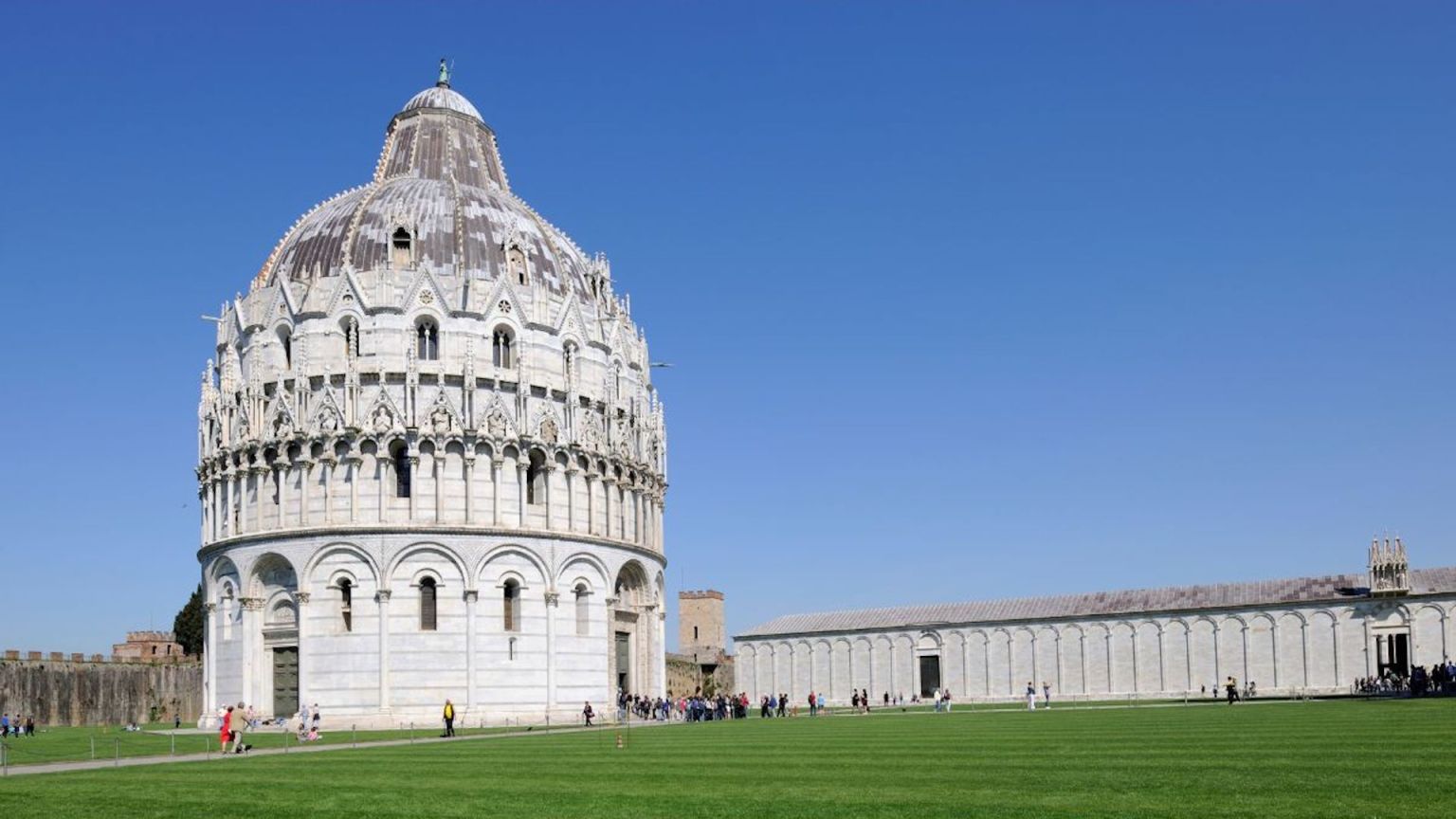
Visit the Baptistery of St. John in Pisa: a masterpiece of art and history
Baptistery of Pisa: the tickets most chosen by travelers
Baptistery & Cathedral of Pisa: Priority Entrance Ticket + Audio Guide
Witness two of Pisa's iconic attractions and admire its architecture
from 20 €
Buy nowWhy visit the Baptistery of St. John in Pisa
The Baptistery of St. John in Pisa embodies the grandeur of Romanesque-Gothic architecture, a must-see in the famous Piazza dei Miracoli.
Founded on August 15, 1152, the Baptistery is not merely a splendid addition to the Cathedral but a marvel on its own, distinguished by the majestic circular structure designed by architect Diotisalvi, making it the largest baptistery in the world. In the 13th century, the exterior was adorned with sculpted decorations and an extraordinary pulpit that became an artistic model. This is where the "renaissance" of Italian sculpture began, leaving a lasting mark on art history.
The striking arches on columns, crafted in white and gray marble, are paired inside with monolithic columns, creating a highly impactful visual atmosphere.
However, the real wonder awaits at the center of the structure: the double-dome system grants the Baptistery legendary acoustics, transforming it into a vast musical instrument. Every 30 minutes, a brief demonstration lets notes resonate in the vaults, creating an enveloping echo for a breathtaking sensorial experience.
Exploring the gallery, climbing the spiral staircases, and observing the details of Guido Bigarelli's baptismal font offer visitors a unique perspective, suspended between art and spirituality, where every step invites rediscovery of the centuries-old history of this magical place.
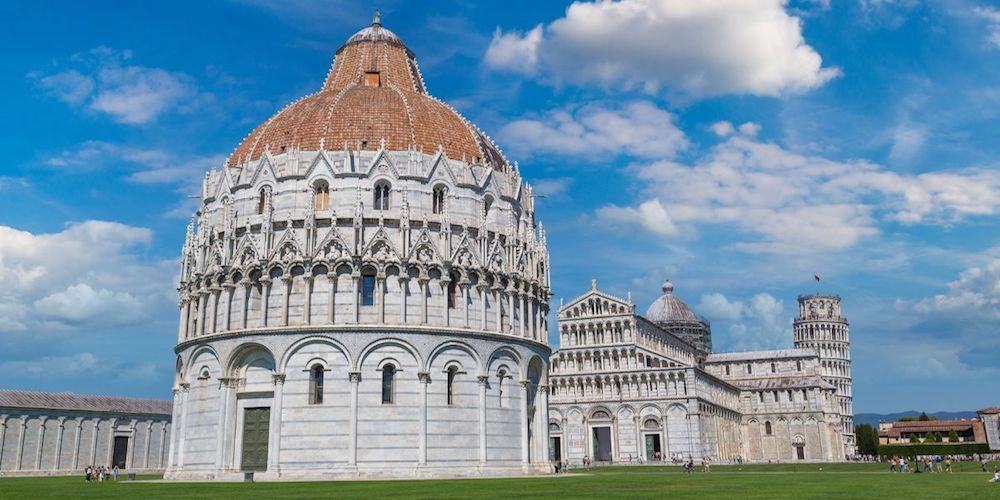
Discover all other experiences
How to visit the Baptistery of St. John
An important point to highlight is that you cannot visit the Baptistery on its own: entrance must be combined with the Cathedral and/or the Leaning Tower of Pisa.
Given the worldwide fame of the square, it’s advisable to book in advance and consider a skip-the-line ticket, especially useful to avoid queues during peak times. This way, you can make the most of your time and admire these masterpieces with reduced waiting time.
If you want a more in-depth visit, the audio guide is a valuable tool, turning each architectural detail into a fascinating story and guiding you through a journey that unveils little-known secrets and anecdotes.
Baptistery of Pisa: tips for your visit
How to get to the Baptistery
If you arrive in Pisa by train, after getting off at the central station, you have various options to easily reach Piazza dei Miracoli, where the Baptistery of San Giovanni is located.
1. Taking Line 1+ from Stazione 1 (direction Park Pietrasantina) will take you directly to the Torre 1 stop, right in front of Piazza dei Miracoli.
2. Alternatively, you can take Line 4 from Stazione 8, which departs every 20 minutes and stops at Del Parlascio, close to the square.
3. If you come by bus from Sesta Porta, in Via Battisti you can take lines 60, 70, 80, 120, or 130, all of which stop at Torre 1, bringing you conveniently to your destination.
4. For those arriving by plane, the PisaMover connects Pisa Airport to the central station. From there, follow the same instructions as if arriving by train. If you're unsure, you can also follow the signs for the Leaning Tower, which is a few steps from the Baptistery.
5. If you prefer walking, you can reach Piazza dei Miracoli from the central station in about 20 minutes (1.7 km).
The best experiences in Pisa
Best attractions around Baptistery of Pisa
all entrance tickets for the most popular Italian attractions
10 things to do in Pisa not to be missed in 2024
What are the best things to do in Pisa? We at Visit Italy have selected 10 of the must-see attractions in 2024.
Read more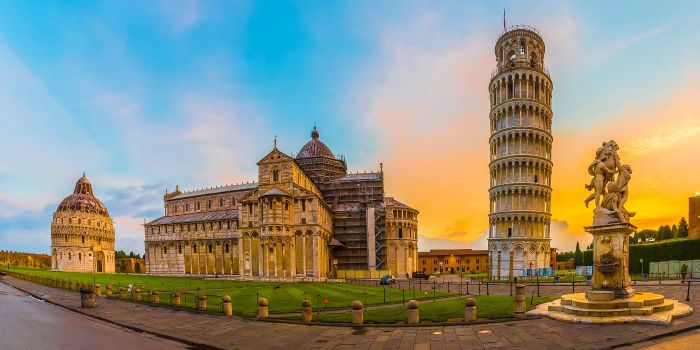
Useful information for visiting the Baptistery (FAQ)
Is the Baptistery of Pisa free?
No, entry to the Baptistery requires a ticket.The entry ticket for the Baptistery is available as part of ticket packages that include other monuments in Piazza dei Miracoli. Prices vary depending on the number of attractions selected: for example, the ticket for the Baptistery and Cathedral costs €8, to which you can add options like an audio guide and skip-the-line ticket, along with including a visit to the Tower and other on-site attractions.
What was the purpose of the Baptistery?
The Baptistery was built as a sacred place specifically for baptisms. By the mid-thirteenth century, it featured a large octagonal font created by Guido Bigarelli da Como, used to immerse adults and children in the sacrament of baptism.
What was the Baptistery of Pisa used for?
Traditionally, the Baptistery was used for the sacrament of baptism, an essential rite for Christians.
What is the largest Baptistery in the world?
The stunning Baptistery of Pisa, located in Piazza dei Miracoli and dedicated to St. John the Baptist. It holds the title of the largest baptistery in Italy—and even worldwide—thanks to its impressive size and architectural grandeur.
What are the opening hours of the Baptistery of Pisa?
Every day from 9:00 a.m. to 6:00 p.m. in winter and from 9:00 a.m. to 8:00 p.m. in summer, with last entry permitted up to 30 minutes before closing.
Highlights of the Baptistery of St. John in Pisa
The Baptistery of San Giovanni in Pisa, founded in 1152 and designed by architect Diotisalvi, stands out for its extraordinary size and beauty. With a diameter of 107.24 meters and a height approaching 55 meters, this structure is the world's largest baptistery, made of white and gray marble, with an imposing double dome that defines the skyline of Piazza dei Miracoli.
Inside, a solemn atmosphere welcomes you, while the charm of architectural details blends with the grandeur of the monolithic columns that adorn the perimeter of the building, creating a beautiful contrast with the magnificent octagonal Baptismal Font. This font, created by Guido Bigarelli from Como, is the heart of the Baptistery, where the sacrament of baptism was administered.
Another distinctive feature is the acoustics, which transforms the building into an extraordinary natural musical instrument. The cylindrical shape of the Baptistery, with its double dome, generates a reverberation that amplifies sound vibrations. Every half hour, the staff performs a short demonstration, singing some notes that propagate through the vast space, offering you a unique sensory experience.
Discover the other attractions of Piazza dei Miracoli
In the heart of Piazza dei Miracoli stand authentic architectural masterpieces, each of which helps to define the uniqueness of this iconic place. Completing the awe-inspiring experience of the Leaning Tower of Pisa are the majestic Cathedral and the enchanting Baptistery, both of which bear witness to Pisa’s rich history and art.
The Cathedral of Pisa, built between 1064 and 1118, is a marvelous example of Pisan Romanesque architecture, with influences that range from Arabic to Byzantine art. Its elegant facade of white and black marble and splendid elliptical dome define the exterior, while the interior is a feast of marble, monolithic columns, and works of art, including the famous pulpit carved by Giovanni Pisano.
The Leaning Tower of Pisa, the city’s undisputed symbol and one of the world’s most recognized icons, is known for its unique tilt, making it an intriguing and singular attraction. Built as the Cathedral’s bell tower starting in the 12th century, the tower, standing about 56 meters high, has a circular base and is structured in eight levels, offering a breathtaking view of the square from above.


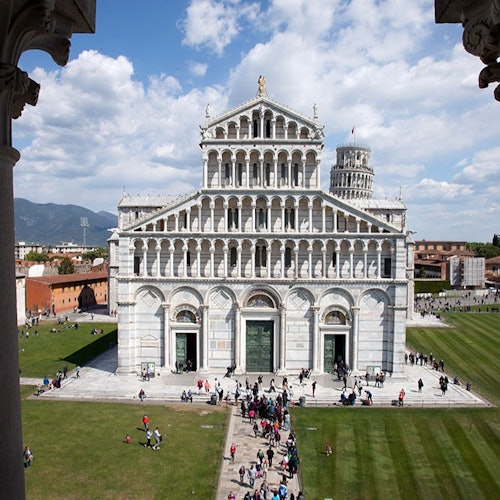

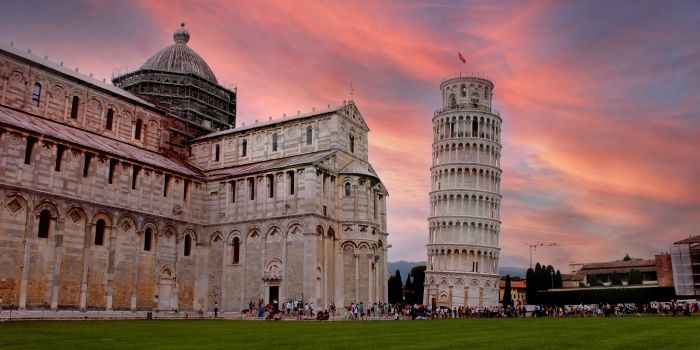
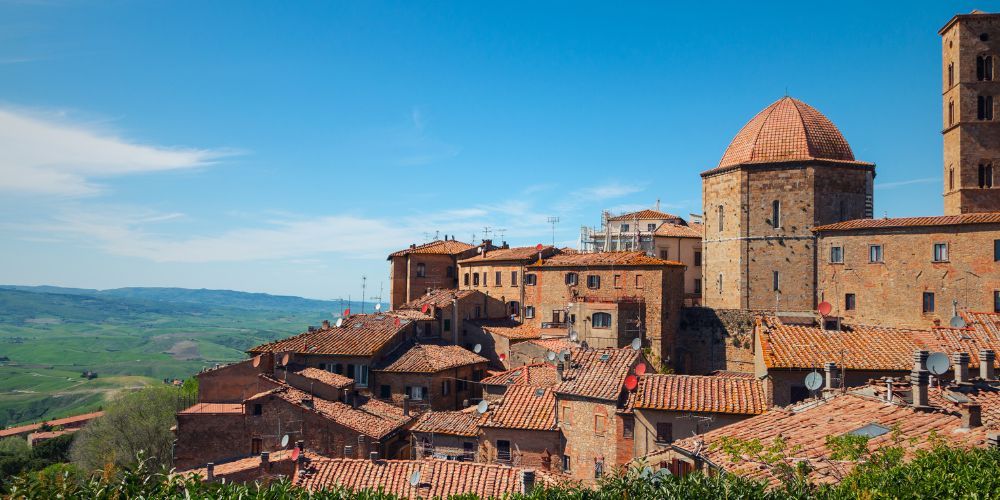
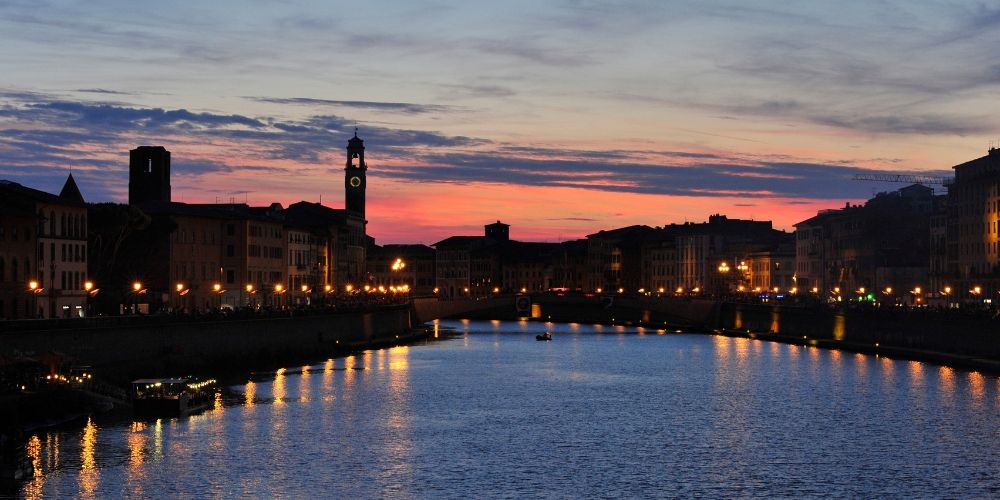
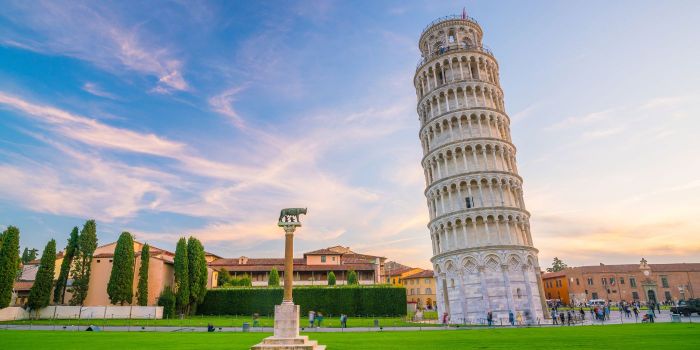
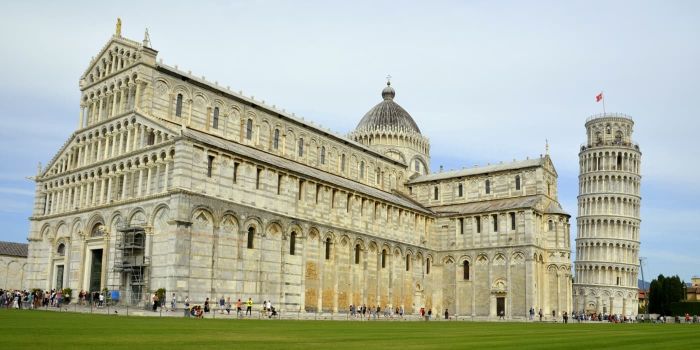
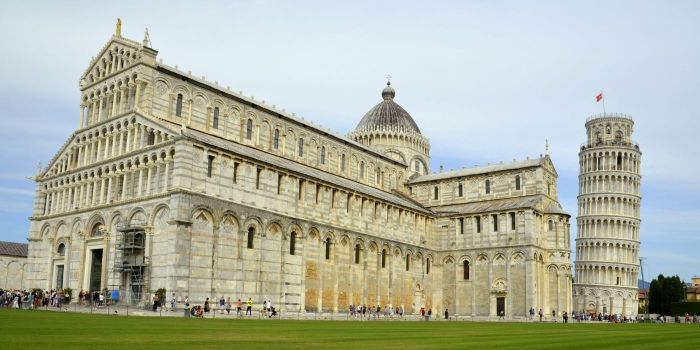
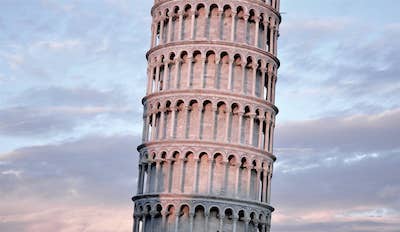
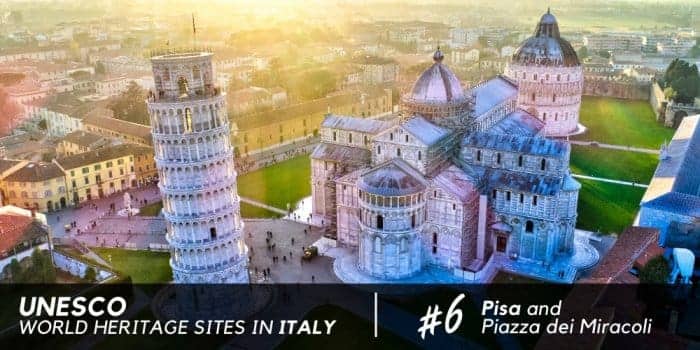








Alessandro Savino
Discover the Baptistery of St. John in Pisa: here’s essential information for visiting the world’s largest baptistery.